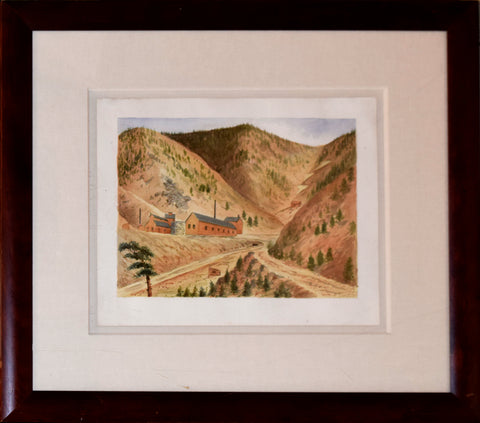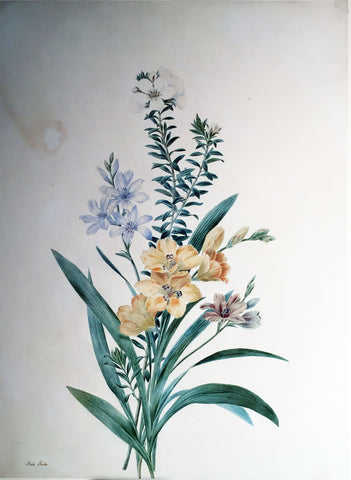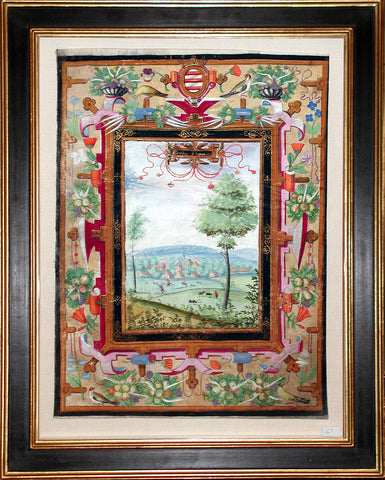
Unknown Artist, The Fairmount Gold and Silver Mining Company
Unknown Artist
The Fairmount Gold and Silver Mining Company
Colorado, 1874
Watercolor on paper
Sheet size: 13 x 10 1/2"
Frame size: 20 1/2 x 22 3/4"
This gorgeous watercolor of the Fairmount Gold & Silver Mine in Idaho Springs, Colorado, marks a valuable period in history when the West was populated with settlers intoxicated by the beauty of the land and the promise of finding riches buried within. Though the identity of the artist is unknown, the delicately rendered hills dotted with trees, and the small structures of the mines resting on the hillside speak volumes of the painter’s passion for the landscape. In 1874, when this painting was created, Idaho Springs was the hotbed of the Gold Rush. The town rivaled Denver in size and productivity, especially when silver was discovered in the late 1870s.
Though gold wasn’t largely sought by Americans until much later, the Spaniards of the sixteenth and seventeenth centuries were drawn to the American West by rumors of land rich in gold. In the mid-nineteenth century, this quest reemerged. The gold rush drew many settlers to the vast and unpopulated West. As rapidly as the West was annexed to the United States, gold-hungry prospectors and wagon trains of families were prepared to make the long, arduous journey from East to West with hopes of bettering their lives.
While many gold hunters voyaged to California during the gold rush, many of these men were already settlers of the West. When news of gold broke out in Colorado, advertised as "only" six or seven hundred miles west of the Mississippi Valley, Easterners ventured out in droves, particularly settlers from the Mississippi Valley region who were hit hard by an economic depression in 1857. However, at this time only prospectors in Pike's Peak had unearthed a few ounces of gold. Speculators seized upon these discoveries, and planned Denver in anticipation of the rush that would soon follow. It didn't matter to the speculators if (at first) the vast lodes of gold expected in Colorado failed to appear, because they profited off the miners who flooded the region regardless if they struck gold.
Fifty thousand hopeful miners arrived in early spring, too early for grass to feed their animals. Many starved or turned back, though the few who stayed eventually struck the mineral belt of the Rockies, yielding more gold than they could have imagined. As a result, Denver and the surrounding mining towns prospered through the rest of the nineteenth century. Soon after the gold rush, silver was discovered in an abandoned gold mine in Colorado. The silver rush commenced in 1877, and the promise of Colorado's riches was renewed for many late-comers to the mining industry as well as those who had profited from gold mining.
We Also Recommend





